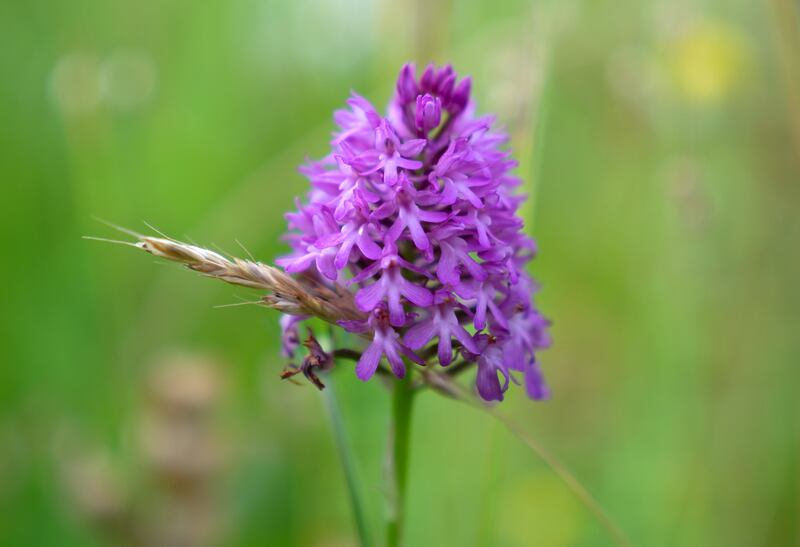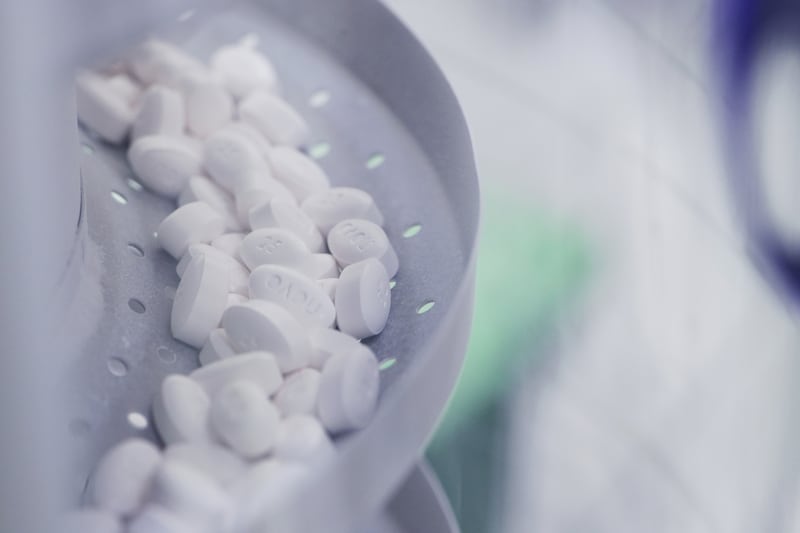Clambering over a wire fence, I step into the wet woodland. And there it is, a flash mob of blooming orchids. The common spotted orchid’s slender, tapering stems rise out of the ground, adorned with elliptical leaves; the cone-shaped flower apex is varied in colour, from a hint of pink to something reminiscent of lilac. A snow-white variety, O’Kelly’s spotted-orchid, is scattered between them and exudes a sweet scent.
This alder wood runs through the centre of Keith and Caroline Brennan’s 12-acre farm in the corner of north Roscommon, tucked between the Kilronan mountains on one side and the soft wetlands of Leitrim on the other. Keith was born and raised in Dublin’s Liberties – in the 1911 census, his ancestors lived on Bride Street – and the prospect of owning land was enticing. Following the economic crash, the Brennans whittled down the options: a two-bedroom house in Drimnagh or a clod of Roscommon soil? They went with life on the land.
Keith wanted to reimagine the farm’s potential and find a way to map out an economically viable future that could withstand the immense climatic uncertainties ahead. If he flattened the land and spread chemical fertiliser, then set it to green grass or planted a forestry crop, he would maximise the public subsidies on offer. But Keith preferred to farm under the assumption that natural resources are exhaustible; without nature, the land would quickly wear out. From the start, he saw his role as a farmer as being wider than just producing food. He would be a land manager and nature-creator as well.

It began with orchids. Wild orchids are remarkably patient and can lie dormant for years if environmental conditions aren’t right. Their rhizomes and finger-shaped tubers remain alive – if a little sluggish – as they bide their time for more favourable circumstances to emerge.
RM Block
His first move was to fence the alder wood to protect it from deer and his flock of diminutive Shetland sheep. The sheep were allowed in during the colder months (their grazing opened up space for the orchids to emerge), but as the sun warmed up in spring, he took them out to let the flowers grow. Within a year, orchids popped up.
We crouch down in the damp humidity of the wood. Among the wispy grasses, the orchids stand erect and sturdy. It’s hard to imagine that they began life as dust-like seeds barely visible to the eye. These microscopic specks contain enough genes to develop but lack the nutrients for germination. To solve this, orchids and soil fungi engage in a quid pro quo relationship.
The fungi – such as the delicate, branch-like Tulasnella – colonise the seeds with thread-like filaments, which provide the orchids with enough nutrients to germinate. As the orchid grows upwards, it converts energy from the sun into sugars, which the fungi willingly absorb. Keith knows this delicate, finely tuned relationship is easily shattered by ploughing, spraying chemicals and adding fertiliser to the land.
[ More Nature columnsOpens in new window ]
Keith split the farm into acre-sized parcels of woodland, species-rich meadows, wild flower hay meadows, open hilly grassland and agroforestry. The small fields are separated by fencing and dense hedgerows of plums, crab apples, hazelnuts, elder, hawthorns, blackthorn and whitethorn, which act as a windbreak and also feed his bees and pigs. O’Kelly’s orchids (named after Patrick O’Kelly, a colourful farmer and botanical expert from the early 1900s who discovered them in his native Ballyvaughan in the Burren) have spread throughout the farm.
We stand in the wild flower hay meadow. The names of the species flow off Keith’s tongue: stitchwort, foxgloves, bluebells, ragged robin, white clover, bird’s-foot trefoil, devil’s bit scabious, pimpernel, meadow vetchling, sheep’s sorrel, yellow primrose, eyebright and cinquefoil. There are 61 wild flower species here. They support a multitude of insects, which are in turn eaten by the 41 species of birds that have made this land their home. In the summer, Keith cuts the meadows in succession and dries the flowers and grasses as hay, which is fed to the sheep over winter. The wildflowers continue to grow well into autumn.
What if, all those years ago, farmers had been paid to stay and manage the land for nature and food, at a similar rate to the money poured into tax-free publicly funded schemes for monoculture forestry?
A 120-acre Sitka spruce plantation, owned by Bank of Ireland, wraps around the farm. A few years ago sections were clear-felled and old farmhouses and stone-walled sheds that were previously hidden felt sun on their walls for the first time in years. In one townland that’s now planted, 18 people had farmed the land.
These people died or drifted away – no doubt tempted by more favourable employment prospects elsewhere, or understandably indifferent to a future on the land. Still, a question remains: what if, all those years ago, farmers had been paid to stay and manage the land for nature and food, at a similar rate to the money poured into tax-free publicly funded schemes for monoculture forestry?
In a sense, one of the greatest problems about the land in this part of the west of Ireland – a mistaken idea that the ground is “marginal”, “poor”, “wet” and “unproductive” – is its greatest strength, for nature thrives in these conditions. We know we are facing catastrophic nature loss and unpredictable, extreme climate events. We’ll probably turn to farmers as adept as Keith, and the lessons learned from rejuvenating these small fields, to restore life to our land in the future.


















